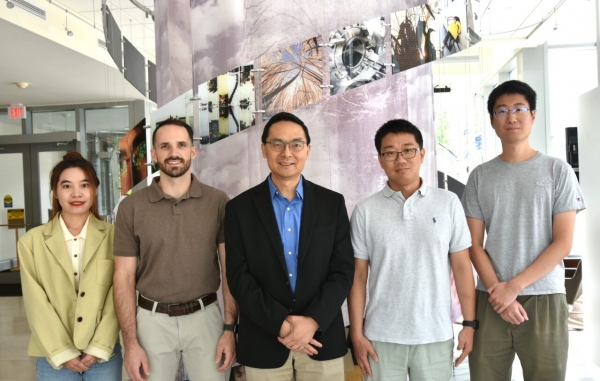A team of pioneering researchers from the Center for Advanced Bioenergy and Bioproducts Innovation (CABBI) has made a significant leap forward in the complex world of molecular chemistry.
Their focus? Azaarenes, unique molecular puzzle pieces crucial to many everyday products, from eco-friendly agrochemicals to essential medicines. The CABBI team demonstrated an innovative way to modify these molecules, a groundbreaking discovery that holds promise for new industrially relevant chemical reactions and sustainable energy solutions.
Central to their research is the use of photoenzymatic systems. In simpler terms, it’s akin to supercharging nature’s tiny workers, enzymes, with a flashlight, enabling them to assemble or repair molecular structures in unprecedented ways. By harnessing the power of light, these scientists have unearthed novel chemical reactions that were previously thought to be out of reach.
The study, published in Nature Chemistry, was conducted by researchers from the University of Illinois Urbana-Champaign. The lead authors are CABBI Conversion Theme Leader Huimin Zhao, Professor of Chemical and Biomolecular Engineering (ChBE), biosystems design theme leader of the Carl R. Woese Institute for Genomic Biology (IGB), and Director of the NSF Molecule Maker Lab Institute at Illinois; and Maolin Li, a Postdoctoral Research Associate with CABBI, ChBE, and IGB.
Read more at University of Illinois at Urbana-Champaign Institute for Sustainability, Energy, and Environment
Image: The research team, from left: Postdoc Yujie Yuan, Ph.D. Candidate Wesley Harrison, CABBI Conversion Theme Leader Huimin Zhao, Postdoc Maolin Li, and Postdoc Zhengyi Zhang. (Credit: Julie Wurth/CABBI Communications)


